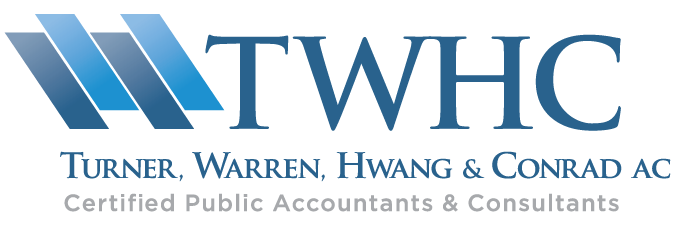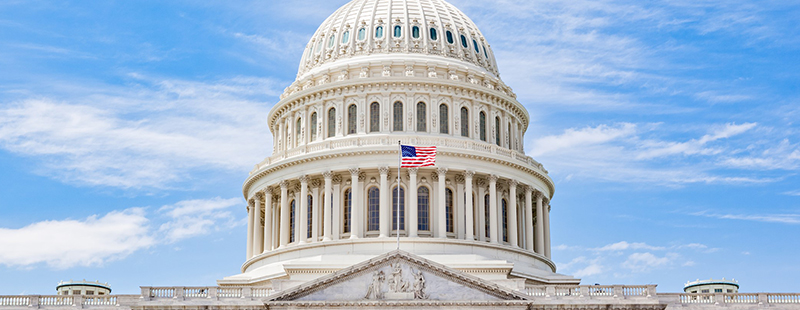On December 27, President Trump signed the Consolidated Appropriations Act of 2021 (CAA), which provides pandemic relief, as well as other tax and health-related provisions.
The CAA contains the COVID-Related Tax Relief Act of 2020 (COVIDTRA), as well as a government funding law. Here are some of the highlights.
Direct payments to certain individuals. The CARES Act, passed earlier this year, provided for direct payments to certain people that the government called Economic Impact Payments (EIPs).
The COVIDTRA contains a new program, which it refers to as “additional 2020 recovery rebates” to people under certain income thresholds.
The provision provides a refundable tax credit to eligible individuals in the amount of $600 per eligible family member. The credit is $600 per taxpayer ($1,200 for married couples filing jointly), in addition to $600 per qualifying child. It “phases out” starting at $75,000 of modified adjusted gross income for individuals ($150,000 for married couples filing jointly and $112,500 for heads of household) at a rate of $5 per $100 of additional income.
The credit is available on taxpayers’ 2020 returns. However, the CAA provides for the U.S. Treasury Department to issue advance payments based on the information provided to the IRS.
Change to the business meal deduction rules. Under the CAA, a business can deduct 100% of business meals for the next two years, provided the food is purchased from a restaurant. In general, taxpayers can deduct the ordinary and necessary food and beverage expenses associated with operating a trade or business, including meals consumed by employees on work travel.
Currently, the deduction is generally limited to 50% of the otherwise allowable amount (although there are some exceptions). Under the CAA, the 100% limit will apply to expenses for food or beverages provided by restaurants that are paid or incurred after December 31, 2020, and before January 1, 2023.
Extended tax break for charitable donations made by non-itemizers. This break was created under the CARES Act, and the CAA extends it for another year. For 2020, individuals who don’t itemize deductions may take up to a $300 above-the-line deduction for cash contributions to qualified charitable organizations. (The deduction limit of $300 also applies to married filers.) The CAA extends this rule through 2021, allowing individual cash contributions of up to $300 ($600 for married joint filers) to be deducted above-the-line to qualified charitable organizations.
More Paycheck Protection Program (PPP) loan funds. In addition to providing more funding for these loans, there’s an expansion of PPP eligible expenses and changes to the eligibility for certain types of businesses. The CAA also clarifies the tax treatment of PPP loans as well as certain aspects of loan forgiveness.
As background, the CARES Act provides that a PPP loan recipient may use the loan proceeds to pay:
- Payroll costs,
- Certain employee benefits relating to healthcare,
- Interest on mortgage obligations,
- Rent,
- Utilities, and
- Interest on any other existing debt obligations.
If a PPP loan recipient uses its PPP loan to pay those costs, the business can have its loan forgiven in an amount equal to those costs. PPP loan forgiveness doesn’t give rise to taxable income, and the tax code generally doesn’t allow a taxpayer to deduct expenses that are paid with tax-exempt income.
The CAA clarifies that taxpayers whose PPP loans are forgiven are allowed deductions for otherwise deductible expenses paid with the proceeds of a PPP loan, and that the tax basis and other attributes of the borrower’s assets won’t be reduced as a result of the loan forgiveness.
Breaking down the PPP provisions. The return of the PPP is of particular interest to accountants, who played a significant role in helping millions of small businesses acquire $525 billion in forgivable loans during the five months the program was accepting applications, according to SBA reporting. The new round of PPP, or PPP2 as some are calling it, contains many similarities to the first round of the PPP but also has several important differences. The following is a high-level view of the PPP provisions.
Who is eligible to apply. PPP2 loans will be available to first-time qualified borrowers and, for the first time, to businesses that previously received a PPP loan. Specifically, previous PPP recipients may apply for another loan of up to $2 million, provided they:
- Have 300 or fewer employees.
- Have used or will use the full amount of their first PPP loan.
- Can show a 25% gross revenue decline in any 2020 quarter compared with the same quarter in 2019.
PPP2 also makes the forgivable loans available to Sec. 501(c)(6) business leagues, such as chambers of commerce, visitors’ bureaus, etc., and “destination marketing organizations” (as defined in the act), provided they have 300 or fewer employees and do not receive more than 15% of receipts from lobbying. The lobbying activities must comprise no more than 15% of the organization’s total activities and have cost no more than $1 million during the most recent tax year that ended prior to Feb. 15, 2020.
- PPP2 will also permit first-time borrowers from the following groups:
- Businesses with 500 or fewer employees that are eligible for other SBA 7(a) loans.
- Sole proprietors, independent contractors, and eligible self-employed individuals.
- Not-for-profits, including churches.
- Accommodation and food services operations (those with North American Industry Classification System (NAICS) codes starting with 72) with fewer than 300 employees per physical location.
The bill allows borrowers that returned all or part of a previous PPP loan to reapply for the maximum amount available to them.
PPP loan terms. As with PPP1, the costs eligible for loan forgiveness in PPP2 include payroll, rent, covered mortgage interest, and utilities. PPP2 also makes the following potentially forgivable:
- Covered worker protection and facility modification expenditures, including personal protective equipment, to comply with COVID-19 federal health and safety guidelines.
- Expenditures to suppliers that are essential at the time of purchase to the recipient’s current operations.
- Covered operating costs such as software and cloud computing services and accounting needs.
To be eligible for full loan forgiveness, PPP borrowers will have to spend no less than 60% of the funds on payroll over a covered period of either eight or 24 weeks — the same parameters PPP1 had when it stopped accepting applications in August.
PPP borrowers may receive a loan amount of up to 2.5 times their average monthly payroll costs in the year prior to the loan or the calendar year, the same as with PPP1, but the maximum loan amount has been cut from $10 million in the first round to the previously mentioned $2 million maximum. PPP borrowers with NAICS codes starting with 72 (hotels and restaurants) can get up to 3.5 times their average monthly payroll costs, again subject to a $2 million maximum.
Simplified application and other terms of note. The new COVID-19 relief bill also:
- Creates a simplified forgiveness application process for loans of $150,000 or less. Specifically, a borrower shall receive forgiveness if a borrower signs and submits to the lender a certification that is not more than one page in length, includes a description of the number of employees the borrower was able to retain because of the loan, the estimated total amount of the loan spent on payroll costs, and the total loan amount. The SBA must create the simplified application form within 24 days of the bill’s enactment and may not require additional materials unless necessary to substantiate revenue loss requirements or satisfy relevant statutory or regulatory requirements. Borrowers are required to retain relevant records related to employment for four years and other records for three years, as the SBA may review and audit these loans to check for fraud.
- Repeals the requirement that PPP borrowers deduct the amount of any EIDL advance from their PPP forgiveness amount.
- Includes set-asides to support first- and second-time PPP borrowers with 10 or fewer employees, first-time PPP borrowers that have recently been made eligible, and for loans made by community lenders.
Various tax “extender” breaks. The CAA extends certain tax law provisions that were scheduled to expire at the end of 2020, including the Work Opportunity Tax Credit (WOTC). As background, the tax code contains dozens of temporary tax provisions with fixed termination dates. Often, these expiring provisions are temporarily extended for a short period of time (for example, one or two years).
In terms of the WOTC, an elective general business credit is available under the tax code to employers hiring individuals who are members of one or more of ten targeted groups. It’s based on qualified first-year wages paid to the individual hired. Under prior tax law, the credit applied to hires made before January 1, 2021. The CAA extends the credit through 2025 and applies to individuals who begin work for the employer after December 31, 2020.
Temporary special rules for flexible spending arrangements (FSAs). A cafeteria plan may permit the carryover of unused amounts remaining in a health FSA as of the end of a plan year to pay or reimburse a participant for medical care expenses incurred during the following plan year, subject to a carryover limit (currently $550). The CAA expands the carryover period for 2020 and 2021. The provision also allows employers to extend the grace period for plan years ending in 2020 and 2021 to 12 months after the end of such plan year for unused benefits and contributions to health and dependent care FSAs.
In addition, an employer may allow an employee who stops participating in the plan during calendar year 2020 or 2021 to continue to receive reimbursements from unused benefits or contributions through the end of the plan year in which the employee’s participation ceased, including any extended grace period. The CAA also provides a special carry-forward rule for dependent care flexible spending arrangements where the dependent aged out during the pandemic.
Larger tax credits for some parents. Under the tax code, to the extent the child tax credit (CTC) exceeds a taxpayer’s tax liability, the taxpayer is eligible for a refundable credit equal to 15% of as much of the taxpayer’s taxable earned income for the tax year as exceeds $2,500. In addition, the earned income tax credit (EITC) for lower-income taxpayers equals a percentage of their earned income.
For both purposes, earned income means wages, salaries, tips and other employee compensation, if includible in gross income for the tax year. Earned income also includes self-employment income, computed without the deduction for one-half of self-employment tax.
Under the CAA, in determining the refundable CTC and the EITC for 2020, taxpayers can elect to substitute the earned income for the preceding tax year if it’s greater than the taxpayer’s earned income for 2020. These changes apply beginning in 2020.
A special break for teachers who buy personal protective equipment (PPE). Currently, eligible educators are allowed a $250 above-the-line deduction for certain otherwise allowable trade or business expenses paid by them. The CAA provides that, not later than February 28, 2021, the IRS must, by regulation or other guidance, clarify that PPE, disinfectant and other supplies used for the prevention of the spread of COVID-19 are covered under the $250 tax break for teachers.
Much More
These are only some of the provisions contained in the law. There are many other key provisions including:
- An extra $300 per week to people who are unemployed and receiving state aid,
- Changes to disaster-related distributions from retirement plans, and
- An extension of the refundable tax credits available to employers who provide paid sick and family leave related to the COVID-19 pandemic.
We’ll be covering more about the law in the coming weeks. Contact us with any questions you may have.





